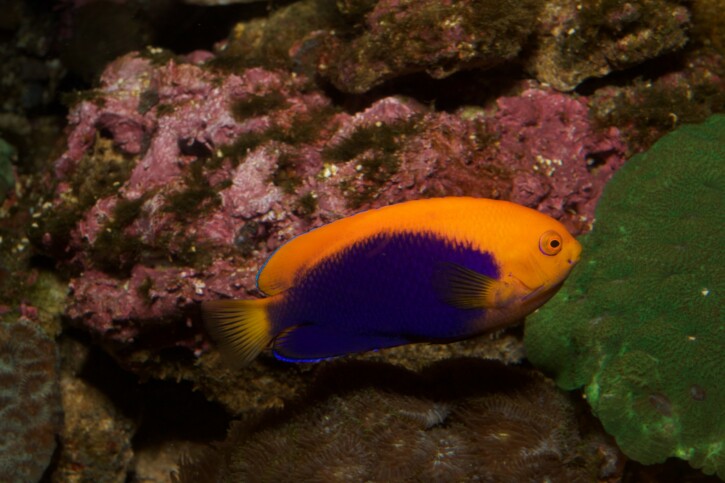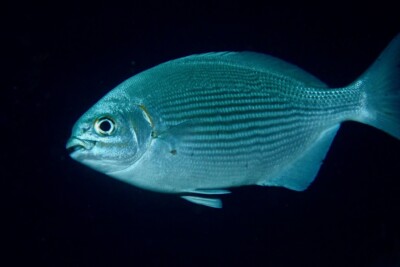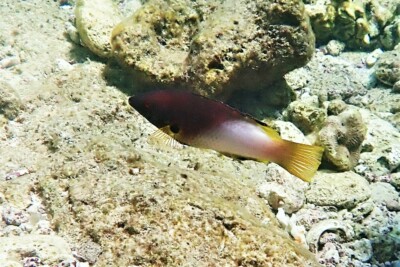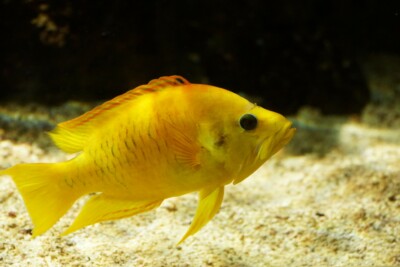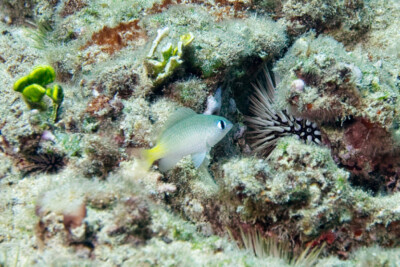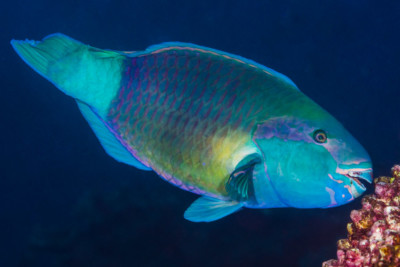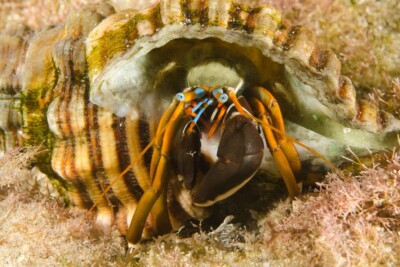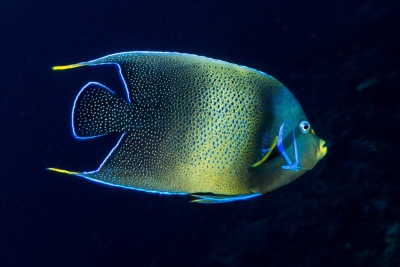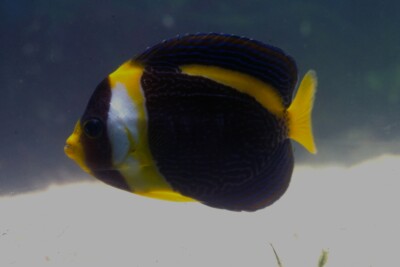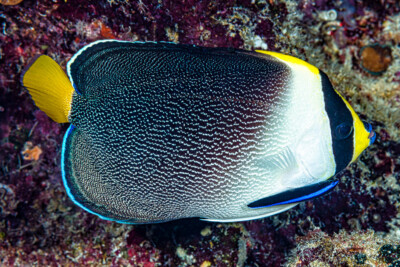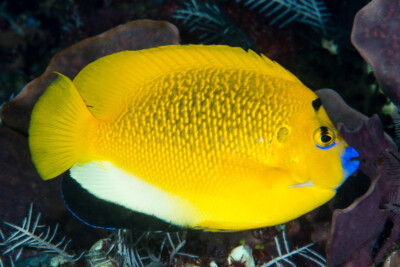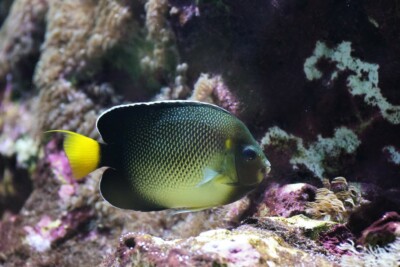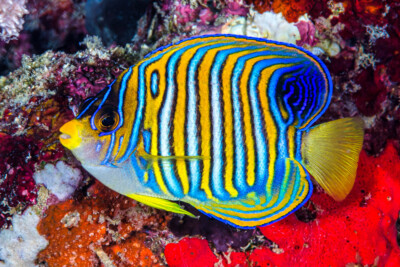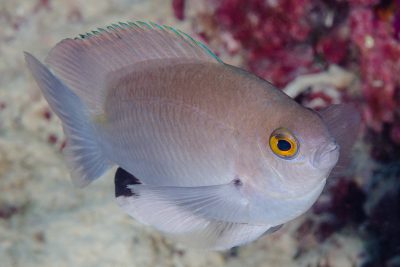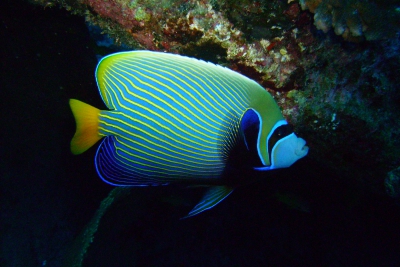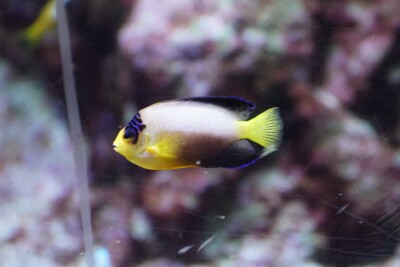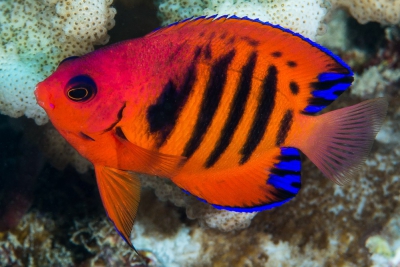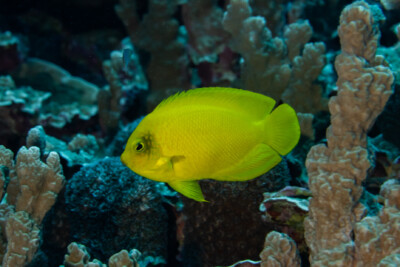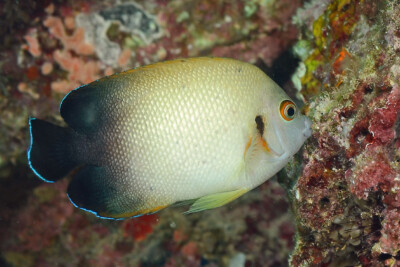flameback angelfish
| Family | Pomacanthidae |
|---|---|
| Genus | Centropyge |
| IUCN category (World) | LC |
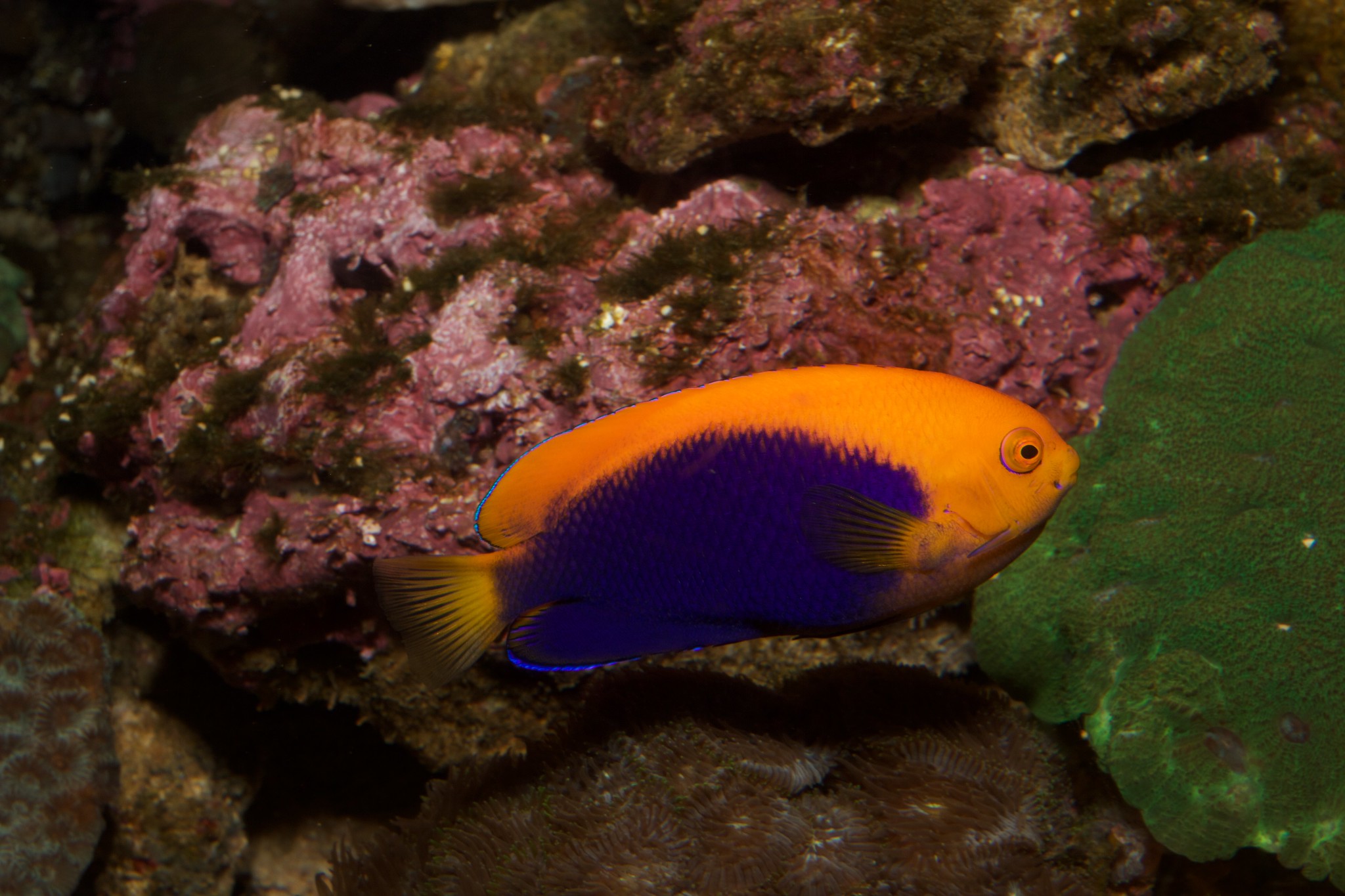

Introduction
Centropyge acanthops, commonly known as flameback angelfish, is a salt water fish from the western Indian Ocean.
This sheet is currently being prepared. The texts currently proposed come from our data model or are being drafted. To request priority for this content, you can write to us HERE.
Who is it?
Morphology
-
Average size6 cm
-
Maximum size8 cm
-
Longevity10 year
-
ShapeOvoid
-
Average size6 cm
-
Maximum size8 cm
-
Longevity10 year
-
ShapeOvoid
How to recognize This fish ?
The flameback angelfish measures around 6 cm. The dominant males can however reach 8 cm. This fish is bicolore with a predominantly jaune and bleu body.
Sexual dimorphism
The adult male is bigger than the female.
Behaviour & Life cycle
-
dietomnivorous
-
Sociabilityliving in small groups
-
territorialNo
-
Way of livingdiurnal
The flameback angelfish is a fish living in small groups naturally found at mid-depth and near the bottom. The members of each group are organized around a well established hierarchy. This species is omnivorous .
Although the flameback angelfish is non-territorial, it is sometimes aggressive towards other species.
Reproduction
-
Reproductionovipare
The flameback angelfish is a fish ovipare.
Harmless species
This species does not represent any particular threats to humans when encountered in its natural environment.
Origin and distribution
What is its habitat?
Natural environment characteristics
-
Temperature25 - 28 °C
-
Depth6 - 40 m
Biotope presentation
The flameback angelfish is most often found at a depth between 6m and 40m. However, it is not impossible to find this species at other depths.
Species of the same biotope
To go further
Sources & Contributions
Participation & Validation
The Fishipedia team and specialist contributors are committed to providing high-quality content. However, although the information comes from scientific sources or testimonials from specialists, the cards may contain inaccuracies.

Adrien Falzon
Translation
Translation done with the valuable contribution of our translators, who make this information available to a wider audience. We sincerely thank them for their commitment.
Scientific partners
Species of the same family
Same genus
Species of the same biotope
